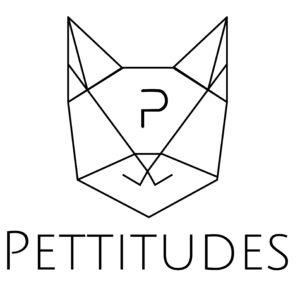Just like us, our pets need also need nutritious foods to maintain optimal overall health and wellness. As a pet owner, it is your responsibility to learn about what are the nutritional needs of your pet and find a healthy dog food for him so he can stay active, healthy, and happy for as long as possible.
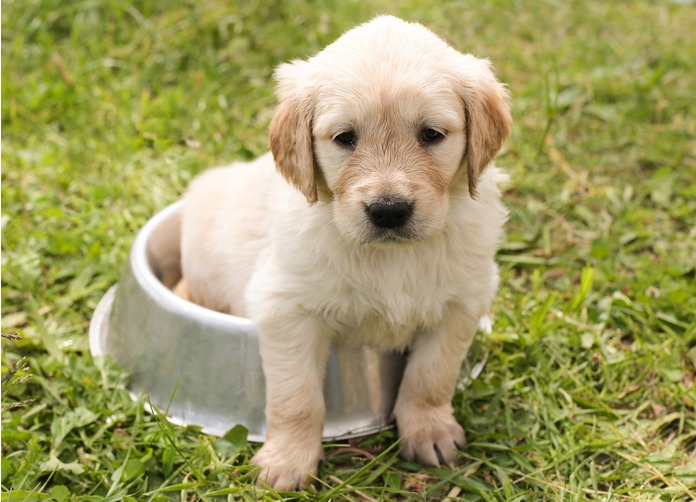
Table of Contents
The Challenge of Finding Healthy Dog Food
While there are already lots of studies that state which are the essential nutrients a dog needs, there are still a lot of vital factors that we need to keep in mind when choosing healthy dog food for them.
But
don’t easily get disheartened. We are here to help you out! In this article, we
will explore the importance of feeding your dog healthy food along with other
relevant information like what makes up healthy dog food, which ingredients to
choose, which to avoid, and a whole lot more!
So if you’re ready, then let’s get started!
Why Is Finding a Healthy Dog Food Important?

Before we get down to brass tacks, let us first try to understand how important eating healthy dog food is to our pets. Why do our pets need a well-balanced diet? What can a healthy dog food provide for your dog?
Providing healthy and nutritious foods to your dog is of paramount importance as the type of food that they eat can have a significant impact on the quality and longevity of their lives.
Remember the saying, “You are what you eat?” Well, this applies not just to us but our pets as well. If they eat better quality food, they will have a better quality of life, and they can be better quality pets and dogs. As a result, they will be less prone to developing sickness, suffering from skin issues and irritation, and even exhibiting behavioral issues.
Also, healthy dog food contains all the essential nutrients, vitamins, and minerals that the dog’s body needs to function properly and optimally.
6 Signs It’s Time to Change Your Dog’s Diet
Are you feeding your pet healthy dog food? Are you sure you are? You can quickly determine if their diet is suitable for your dogs by evaluating their overall health. If the diet of your dog is not well-balanced, a few signs will undoubtedly show. These signs will tell you that you have to make necessary adjustments to your dog’s diet.
With that in mind, here are a few signs you need to watch out for:
Dull and Flaky Coat
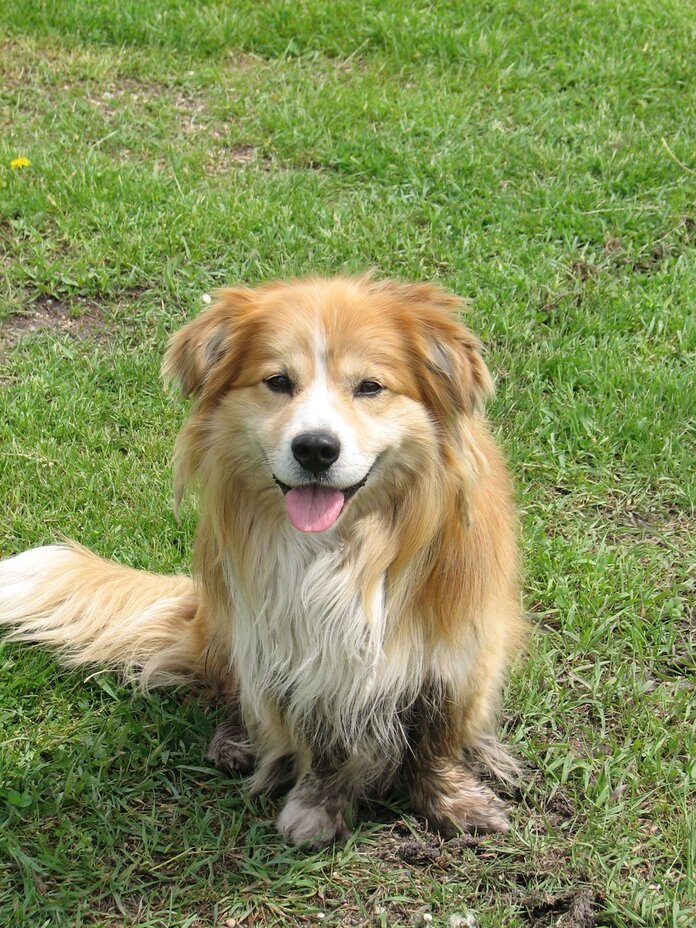
A dull and flaky coat is one sign that you can easily spot. Is the coat of your dog starting to lose its shine? Is it beginning to flake? Or worse, does his hair shed more than the usual? If it does, then you may need to change his diet.
You see essential fatty acids help keep the dog’s skin and coat as healthy and shiny as possible. If his coat looks dull and flaky, it means that his diet lacks these fatty acids. To remedy that, you should switch to dog food that contains the right amount of Omega-3 and Omega-6 fatty acids.
Change in Energy Level

Have you noticed that there is a change in your pet’s energy levels? Does he use to run and play around the house the entire day, but these days, it seems like all he wants to do is sleep? A change in energy levels or any signs and symptoms of lethargy and weakness may indicate a low quality or imbalanced diet.
You see, your puppy or dog needs adequate nutrition to maintain his energy levels, so you may want to make sure that he is getting enough protein. If your pet has recently experienced a stressful event, suffered from an injury, or undergone an operation, you can help speed up his recovery process by feeding him a diet that is rich in antioxidants.
But please keep in mind that a change in energy levels can come as a result of a wide array of factors. Before making any changes to his diet, have him checked by a veterinarian first.
Gastrointestinal Issues
Is your dog moving bowels more frequently than usual? Or maybe he hasn’t moved his bowls at all? Diarrhea and constipation are two digestive problems that may require a change in diet. Aside from these two, other GI symptoms to watch out for include flatulence, vomiting, and rumbly stomach.
GI issues may indicate food intolerance. If this is the case, try switching his dog food into a dog food formulated for dogs with a sensitive stomach.
Senioritis

How old is your dog? The nutritional needs of your dog changes as he grows old. If your dog has already entered the senior years, you may have to change his diet. Depending on the size and breed of the dog, the average senior years of a dog is around 5 to 7 years.
If your dog is already in the senior years, you must switch him into a diet that has lower calories but has a higher amount of fiber. Moreover, you will also have to incorporate supplements formulated for joint support and an immunity boost.
Itching
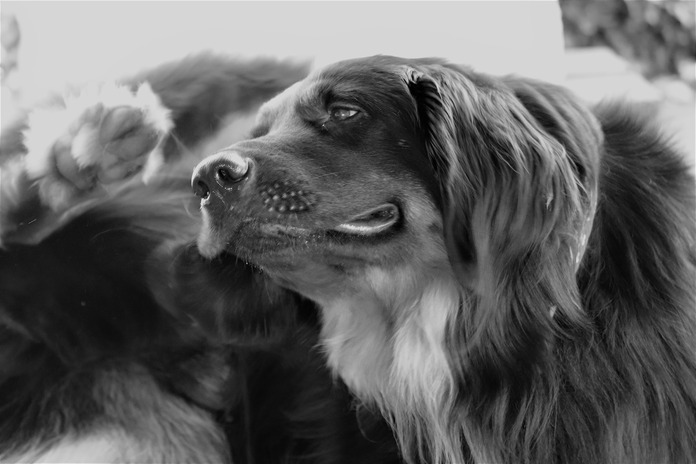
Dry skin and itching are two of the most common signs and symptoms of an allergy in pets. Dogs have a high tendency to develop allergies. It can be from the soy, wheat, or corn content of his food.
With that in mind, you can quickly address this issue by switching into a low-allergen diet so you can minimize the amount of allergens that your dog is exposed to. If possible, try bringing him to the vet. The vet will recommend either a skin sensitive diet or a diet tailored to your dog’s specific needs.
Weight Loss or Gain

An imbalanced diet will lead to two things—overweight or underweight pets. How to tell if the weight of your dog is within the healthy range?
You can ask his vet what his ideal weight should be (it varies depending on the dog’s breed, gender, size, and age), but you can also examine his weight on your own. One good thing to look at will be his waist.
According to vets, the body of pets should have an hourglass shape. Additionally, you should be able to feel your pet’s ribs through his coat.
If you can no longer feel his ribs through his coat, it is most likely that your dog is already overweight. On the other hand, your pet is most likely to be underweight if his ribs are showing through his coat.
If your dog is overweight, you should switch his diet into a low-calorie and high-fiber food. If he is underweight, try feeding him food that contains more protein and nutrients.
If your dog is extremely obese, it would be best that you seek nutritional advice from his veterinarian.
What Makes Up a Healthy Dog Food?
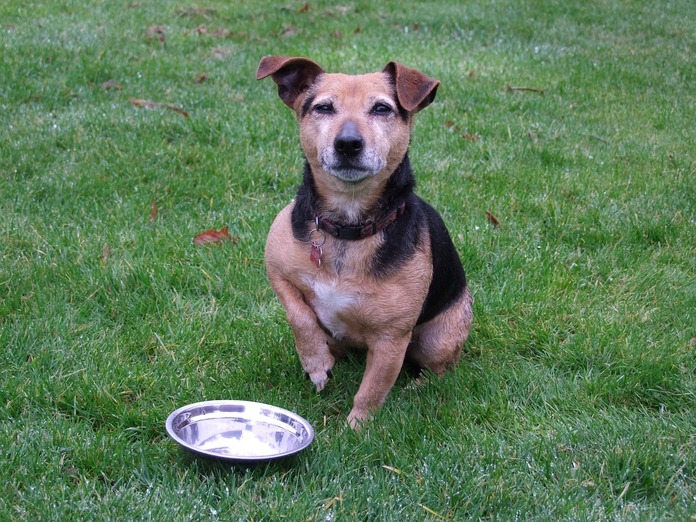
As mentioned, a balanced diet is of paramount importance for both puppies and dogs. It is by giving your pet a balanced diet that you can maintain his overall health. But what makes up a balanced diet for dogs and puppies. Below are some of the primary nutrients that healthy dog food should have:
Proteins
It is essential in building the tissues and muscles of your puppy and dog.
Fats
These are the ones responsible for keeping the skin and coat of your dog as healthy and shiny as possible. More than that, these nutrients are essential in maintaining and developing a healthy brain and vision.
Carbohydrates
These are the main sources of calories of your dogs. It supplies them with the energy that they need.
However, keep in mind that too many carbohydrates can lead to obesity, so you need to monitor the carbohydrate content of your dog’s food.
Water
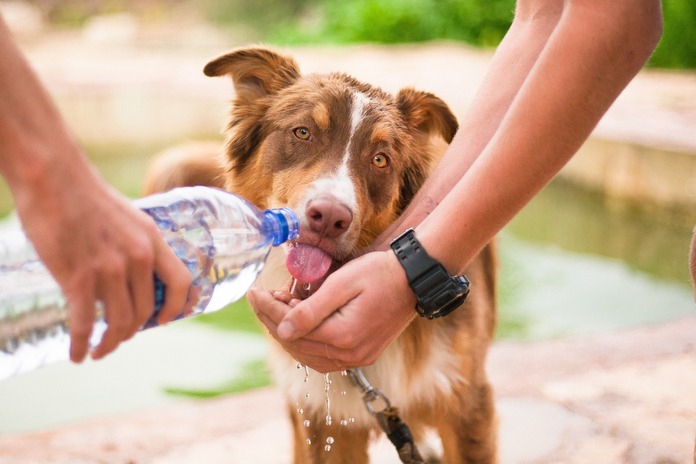
The role of water is to move nutrients in and out of the cells in the dog’s body. It is also vital in the digestion of food.
Most dog foods in the market contain up to 78% of water. However, that is not enough for the needs of your dog. That’s why it is always a good idea that you give your dogs access to fresh and clean water at all times.
Vitamins and Minerals
Same with our bodies, the bodies of animals are also quite complex with various biochemical processes that are going on at all times. These functions are facilitated and supported by over 50 types of nutrients and minerals. The most important of which are vitamin C, calcium, magnesium, and phosphorous.
There you go—the necessary nutrients that dogs and puppies need to have. But as mentioned, the nutritional needs of a dog may vary as he grows old. While dogs and puppies need the abovementioned nutrients in general, they may have specialized needs at every stage of their life and depending on his medical condition as well as other factors that we will discuss in the next few sections.
Healthy Dog Food vs Bad Dog Food: How to Tell the Difference?

What can make or break the quality of dog food? It is no other than its ingredients. Healthy dog food contains all the right ingredients with no traces of the wrong and harmful components. On the other hand, a bad dog food lacks specific essential nutrients, contains all the right nutrients but at smaller amounts, or has one or all of the ingredients that you should avoid in dog food.
To help you weed out the healthy dog food from the bad ones, we are here to provide you information on the essential ingredients you need in dog food along with the harmful dog food ingredients that you need to watch out for.
The Ingredients to Look For in a Healthy Dog Food
To maintain the overall health of your dog, feed him a healthy dog food that contains the following ingredients:
Human-Grade Whole Meat
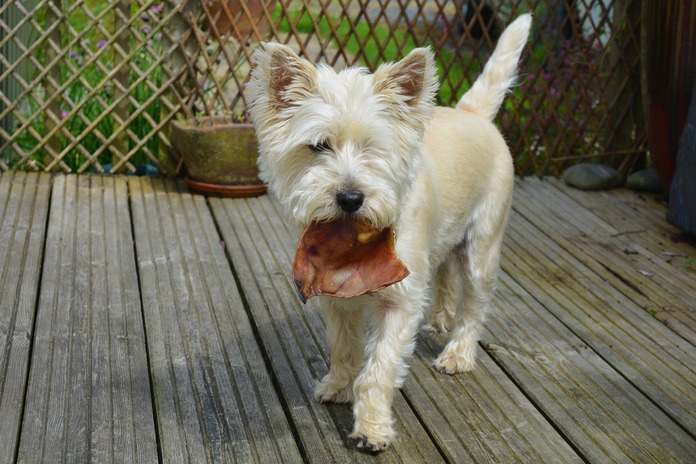
Meat is essential in a dog’s diet because it is an excellent source of protein for them. Proteins contain amino acids which are the building blocks of life. These nutrients are involved in the different functions of the body. The body uses it to build and repair cells as well as generate energy.
Meats have become the go-to source of protein instead of vegetables because they contain higher levels of essential amino acids. Aside from that, studies have shown that the digestive systems of dogs can kill bacteria and other pathogens as well as digest food better under an acidic environment. The consumption of red meat promotes acidity in the stomach.
When choosing pet food, you need to choose one that contains human-grade meat products. By human-grade, we are referring to the finished food product that is also approved for human consumption. The meat that your dog consumes must be human-grade as this type of meat has undergone a more rigorous and thorough inspection, so you are sure that it is safe for your pet.
Keep in mind that manufacturers list the ingredients in the label according to quantity—from highest to lowest. Because of this, the label must indicate the source of protein (whole meat or meat meal) as the first ingredient in the list.
Meat Meal
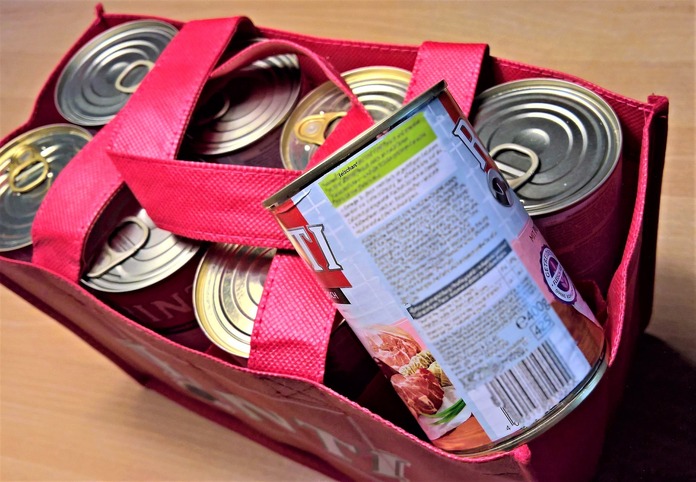
It is off-putting to see the word meat meal in your dog food’s label because it sounds synthetically manufactured. But the truth is, the meat meal is one of the healthiest ingredients used in producing dog food. A high-quality meat meal may even be more nutritious than fresh whole meat.
How is this so? You see, the major component of whole meat is water (around 70%), and only a portion of it is protein. On the other hand, meat meal contains higher amounts of proteins (approximately 65%).
To further understand why meat meal contains a high amount of proteins, you have to be familiar with how they manufacture meat meal. Meat meal undergoes the process called rendering. During this process, the fresh ground meat is cooked until all the water evaporates, leaving you a dry and highly concentrated source of protein.
But as mentioned, meat meal can be more nutritious than fresh meat only if it is of high quality. You can differentiate the excellent meat meal from the bad ones by looking at the terms used in the ingredients label.
The label lists high-quality meat meal as “name of animal source + meal” (e.g., venison meal, chicken meal, lamb meal, duck meal, so on, and so forth.)
On the other hand, the terms used to indicate low-quality meat meal are nonspecific or does not specify the exact animal source (e.g., meat meal, animal meal, meat, and bone meal.) If the meat meal comes with the term, by-product, you should avoid it too.
Whole Grains
A lot of dog owners shy away from dog food that contains grains as some dogs are allergic to it. But if your dog has no known sensitivities to it, whole grains can be a beneficial dog food ingredient. The grains can deliver added digestible fiber, complex carbohydrates, and energy.
Carbohydrates
One ingredient that dog owners don’t want in their dog food is carbohydrates since it can promote gain weight. However, keep in mind that these substances are the ones that provide energy to your pet, so they are an essential dog food ingredient too.
The key to preventing obesity in dogs is to make sure that the carbohydrate content of dog food is not too much. With that in mind, go for a dog food that features carbohydrates at the lower portion of the ingredients list.
The source of carbohydrates matters too. Avoid dog food that lists down whole wheat, corn, and soy as their carbohydrate sources since these are low-quality ingredients. The best carbohydrate sources in dog food are peas, barley, oats, and rice.
Fats
Fats contain fatty acids, which are the substances needed to keep your dog’s hair as healthy and shiny as possible. Omega-3 and Omega-6 fatty acids are also for your puppy’s vision and brain development.
When evaluating the fats content of dog food, make sure that it comes clearly labeled, easily identifiable, and all-natural sources like safflower oil and chicken fat.
Fruits and Vegetables
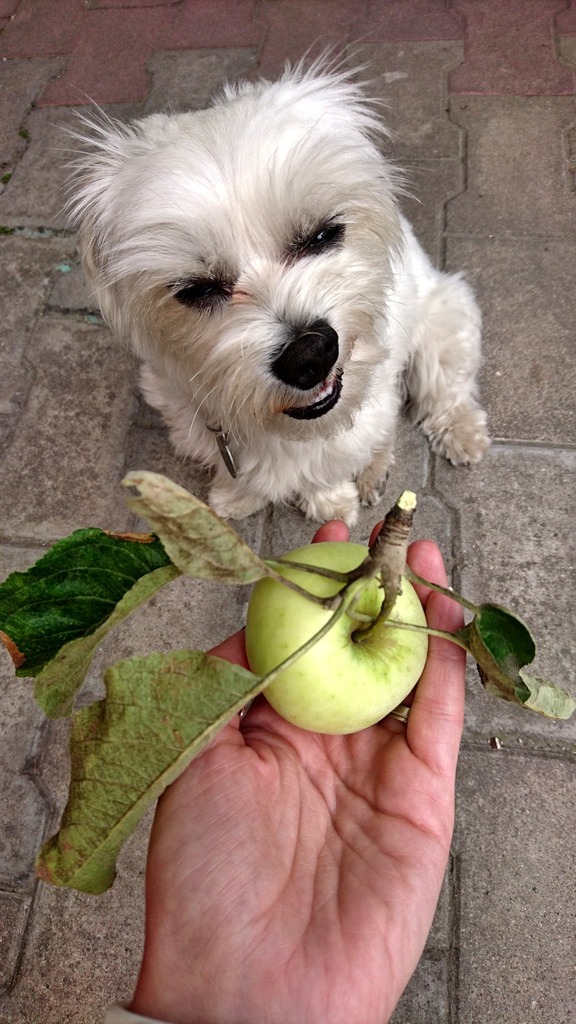
The inclusion of these ingredients in dog food is not necessary, but these are nice to have because these contain vitamins and minerals that can support different bodily functions. Additionally, these contain antioxidants which can help boost your dog’s immune system.
Essential Amino Acids
Sometimes, good protein sources are not enough to supply your dogs (especially puppies) the amino acids they need to develop and grow properly. Considering this, you may want to look for specific amino acids in the ingredients list. These include arginine, lysine, leucine, isoleucine, histidine, phenylalanine, tryptophan, and many more.
Chelates
These are mineral compounds that naturally occur in inorganic compounds. These are vital in maintaining and developing healthy bones and structures in a puppy. Some of the important chelates to look for in a puppy food are magnesium, sulfur, calcium, and phosphorous.
Natural Preservatives
Preservatives are the substances that keep your dog food fresh for longer. However, it is essential to make sure that the dog food contains natural preservatives like Tocopherols and Ascorbic Acid.
The Ingredients to Avoid in a Bad Dog Food
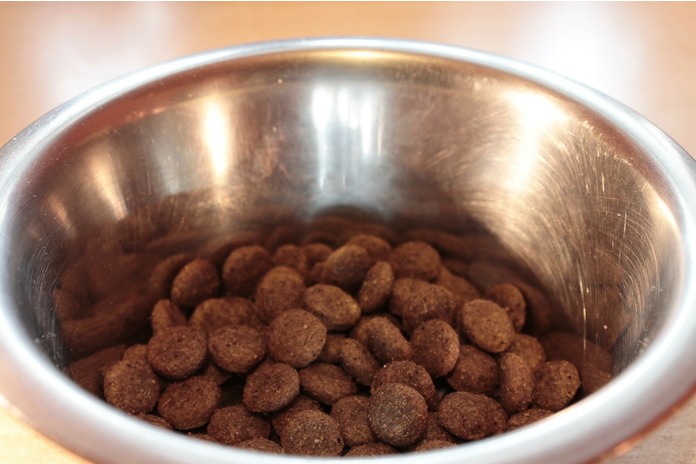
Now that you are already well-versed with the ingredients that make up healthy dog food, it is about time that we familiarize ourselves with the ingredients to avoid in dog food. Here they are:
Corn
Some manufacturers add corn as filler in their products because it is low cost. The problem with this grain is it is hard to digest and may cause allergies in dogs. Last but not least, it offers little to no nutritional value to your pet.
Sugars and Sweeteners
The most commonly used sweetener in dog food is corn syrup. The inclusion of corn may make the ingredient seem healthy, but the truth is, corn syrup is a type of sugar added to make the dog food taste sweet. Any kind of sugar is a no-no in dog food as it can promote gain weight and cause different health issues like diabetes.
Other sugar and sweeteners that you should avoid are cane sugar and molasses.
Wheat Gluten
Manufacturers commonly use this as a meat substitute and an alternative source of protein. Sadly, it is less nutritionally complete and contains a lesser amount of protein as compared to meat.
Cellulose
Companies add this ingredient to dog foods as a carbohydrate source. What you need to know is that cellulose is one of the most common materials in the lumber and construction industry.
Rendered Fat
We have mentioned that fats are one of the essential nutrients in a dog’s balanced diet, but you have to make sure that the fats in the dog food came from safe sources. Rendered fat is not one of them as it refers to the fat collected from expired grocery meats, dead, dying, or diseased livestock.
Flaxseed
We all know flaxseed to be a fantastic source of omega-3 fatty acids, and dogs need fatty acids, right? That’s true. But one thing you need to know that the body of dogs cannot digest or process plant-based sources of omega fatty acids properly, and flaxseed is one of them.
Food Dyes
These are added to the dog food to make it look more appealing. However, these are chemical additives that have no nutritional value. What’s worse is, these are known to be carcinogens and may cause organ damage. At the very least, these can also cause allergies.
Some of the commonly used dyes in dog food are Red 40, Blue 2, Yellow 5 and 6.
Artificial Preservatives
There is nothing wrong with incorporating preservatives in dog food formulation. However, you need to make sure that the preservatives added are not made from synthetic and harmful chemicals like Butylated Hydroxyanisole (BHA), Butylated Hydroxytoluene (BHT), and Ethoxyquin.
BHT is linked with cancer development, while BHA is associated with kidney damage. On the other hand, ethoxyquin is related to immune system disorders, blindness, different types of cancer, liver, and kidney damage.
Soy
Manufacturers incorporate soy in their formulation as a whole grain. However, the bodies of our dogs are not as efficient as human bodies when it comes to digesting and processing soy. If you feed your pet dog food that contains soy, there’s a high chance that he will experience various digestive problems like bloating and flatulence.
Soy may also block certain enzymes that are vital for digestion.
Propylene Glycol
If you are into cars, you have heard of this chemical already since it is used as an anti-freeze in the automobile industry. In the dog food industry, it is used in maintaining moisture in semi-moist dog food.
The said chemical is not harmful when ingested in small amounts. But when you feed your pet with dog food that contains such chemicals, it will accumulate over time and may cause digestion problems. Worst case scenario, it can put your dog at risk of anemia and obesity.
Fillers
Low-quality dog food contains vast amounts of fillers. These are the ingredients added by the manufacturer to add bulk to dog food, but they do not offer any significant nutritional value to your pet.
To make sure that the dog food does not contain any filler, the ingredients to watch out for are soybean hulls, modified cornstarch, oat hulls, rice, and corn bran.
Artificial Flavors
Manufacturers use artificial flavorings to make their products more palatable. But the truth is, high-quality dog food already tastes good. Only the low-quality ones need flavor enhancers.
The two most commonly used flavorings for dog food are MSG and Animal Digest.
MSG is a known allergen. It can be tricky to find MSG in the ingredients list because it is listed using different terms, including protein isolate, hydrolyzed protein, texturized protein, and natural flavors.
On the other hand, the animal digest is a heavily processed broth made out of tissues from unspecified animal sources.
These ingredients do not provide any nutritional value to your pet. Worse is, some of these ingredients may even cause harm to your pet. With that in mind, you should never purchase dog food products that contain any of these ingredients.
Other Factors to Consider When Choosing Healthy Dog Food
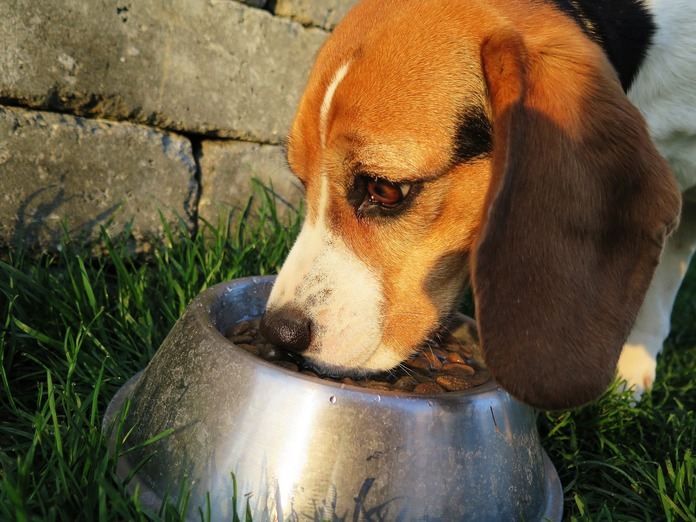
If you want to make sure that your dog food is safe and healthy for your pet, there are other essential factors you need to keep in mind aside from the ingredients. Below are some of them:
Dog’s Life-Stage
The nutritional needs of your dog will change as he grows old. We have said this again and again throughout this article, and we can’t stress this enough. If you want to feed your dog properly, you must choose food for your dog, depending on the stage of life he is currently in.
Dog Food Nutrition for Puppies

Puppies are still undergoing lots of growth and development, and that’s why they would need more proteins (along with essential amino acids), certain minerals, and fats.
Additionally, the growth and development that puppies undergo consume lots of energy and calories, so puppies also need to consume more calories than adult dogs. Because of this, you must feed your puppy with food that is specially formulated for their nutritional needs. If you give them adult dog food, they will be at risk of dietary deficiencies.
To make sure that you will provide your puppy with a balanced diet, you must look for a puppy food that contains these words on its label:
“Provides balanced and complete nutrition.”
“Delivers complete and balanced nutrition for puppies following the AAFCO feeding trials.”
“Meets the puppy’s nutritional requirements as established by the Association of American Feed Control Officials (AAFCO)”
Once the puppies have reached 80% of his adult size, you can switch him to adult dog food, which contains lesser calories, proteins, and fats. Giving puppy food to dogs may lead to obesity.
Dog Food Nutrition for Senior Dogs
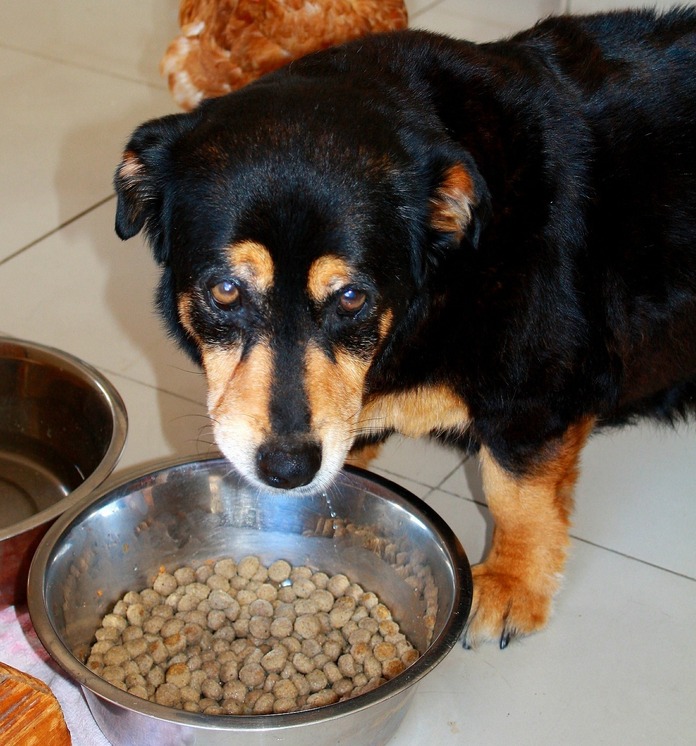
When the dog reaches senior age (this age may vary depending on the breed of the dog), he may need additional nutritional support for his immune system (antioxidants), joints (glucosamine), and inflammation issues (fatty acids).
Lucky for you, the AAFCO has made things easier for you by providing a simple statement about which type of dog would best benefit from the dog food on the product’s label.
Breed
Each dog breed has a unique physiology. As a result, their metabolism is different from one another. It can profoundly impact their nutritional needs.
But more than the difference in their metabolic rates, their predisposition to certain diseases is the most important thing to consider when choosing dog food for certain dog breeds.
For example, boxers are genetically predisposed to lymphomas. On the other hand, Dobermans have a higher risk of developing heart problems, while Golden Retrievers are prone to developing skin allergies and food sensitivities.
You must familiarize yourself with what are the possible health issues that are specific to the breed of your dog so you can choose the right dog food that would help address or support their nutritional needs.
Breed Size
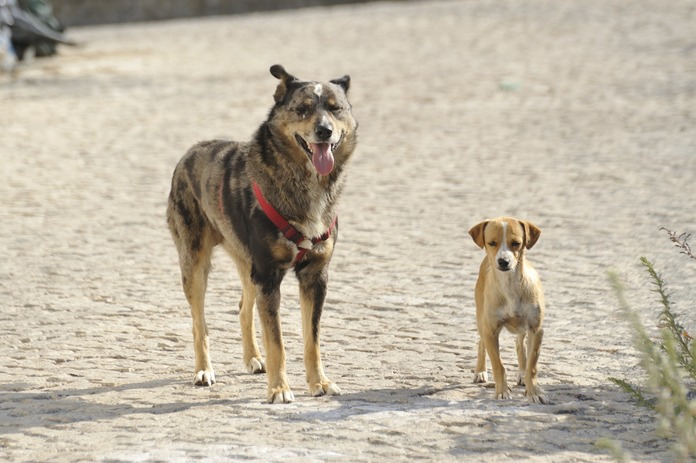
Breed size of your dog is another critical factor that you need to keep in mind when choosing a healthy dog food. The sizes of various breeds can highly affect the way they metabolize food and will, therefore, have a significant impact on their nutritional needs.
When it comes to breed size, there are three categories—small, medium, and large.
Nutrition for Small-Breed Dogs
Small-breed dogs or dogs that weigh below 10 pounds(Chihuahua, French Bulldog, Toy Poodle, Pomeranians, Pugs, and Beagles) have the highest metabolism rate of all. Such breeds consume nutrients and calories a lot faster than other breed sizes. It is most especially true when they are puppies since their growth and development would consume more calories and nutrients than the usual.
With that in mind, your puppy needs all the vitamins, minerals, proteins, and whole grains that they can get since these are necessary for growth and development. The key to feeding a puppy is to provide them with dog food that has fewer yet healthier ingredients.
Nutrition for Medium-Breed Dogs
On the other hand, the metabolic rate of medium-breed dogs or dogs that weigh between 10 to 25 pounds (Basset Hound, Siberian Husky, Labrador Retriever, Poodle, Collie, and Bulldog) are less aggressive than that of the small-breed dogs.
However, they are still more active than large-breed dogs, so they still need a good supply of fatty acids, vitamins, minerals, and proteins. At that, make sure that the dog food you will choose for a medium-breed dog is nutrient-dense since their built is a lot smaller than the large-breed dogs. In this way, you are sure that they are getting the nutrients that they need without overwhelming their stomachs.
Nutrition for Large-Breed Dogs
Lastly, large-breed dogs or those dogs that weight 25 to 50 pounds (Great Dane, English Mastiff, Saint Bernard, Alaskan Malamute, Belgian Malinois) have an extensive due to the size of their body.
Aside from being nutrient-dense, the dog food that you should choose must contain the right amount of protein and calcium to ensure that their bones and muscles will be at their optimal condition. Since their weight is high, they are at risk of developing different join disorders like elbow and hip dysplasia.
It is also necessary that the dog food has the right ratio of calcium to protein to prevent growth abnormalities.
Canned Vs. Dry Food
When you go shopping for dog food, you will come across two choices—dry and canned. Each type comes with pros and cons. To make the right decision, you must understand what their differences are.
Pros and Cons of Wet Food
Let’s start with wet food. Wet food contains lower calories than dry food, so they can be fed to dogs who need to lose weight.
On top of that, wet food contains a higher amount of water, so they are great options for dogs who don’t drink that much throughout the day.
Another great thing with wet food is that they give off a strong smell and taste so they can stimulate the appetite of dogs who are picky eaters. It is also easier to chew, so they are the right choice for dogs who have difficulty chewing or swallowing.
The downside of feeding your pet canned food is it increases the risk of developing certain oral health problems like tooth decay, bad breath, and the likes.
Since it contains moisture, wet dog food quickly loses its freshness when kept out for long. So if your dog doesn’t eat the food in his dish right away, feeding him wet food may not be the best idea.
Pros and Cons of Dry Food
On the other hand, dry dog food is considered to be nutrient-dense and can be a great option in feeding medium to large breed dogs. Since they are dry, they are also less prone to spoilage or bacterial contamination. Also, using kibbles is the most convenient and least messy way to feed your dog.
It has also been noted that dry dog food can help get rid of bacteria and remove dirt from your dog’s teeth or mouth due to its rough texture.
However, picky dog eaters are less likely to eat dry dog food because they do not have an appealing smell or taste.
Aside from these pros and cons, you also need to consider your lifestyle as well as your dog’s preference.
Dog’s Allergies
Does your dog have known sensitivities to certain types of food or a specific ingredient? Or have you noticed your dog exhibiting symptoms of an allergy such as itching, skin redness, ear, and skin infections? If yes, then you may want to check on the ingredients and type of dog food that you are feeding him.
To address the allergic reaction that your dog is experiencing, the best thing that you can do is feed your pet with a specialized diet that contains high amounts of protein to help boost his immunity. Studies show that dogs suffering from allergy can benefit from consuming a specialized diet for 21 days.
To prevent this from happening again in the long run, you should pinpoint, which is the ingredient that is triggering the reaction and avoid all dog foods that contain such ingredients.
Dog’s Activity Level
It is a must that you take into account the activity level of your dog when choosing which dog food to feed him. When you don’t carefully select a diet tailored to their activity level, the weight of your dog will be compromised. A hyperactive dog will be undernourished while a dog with a sedentary lifestyle will get overnourished and overweight.
If your dog is physically active, you need to feed him nutrient-dense food to replenish the calories that he has burnt the entire day. On the other hand, you may have to buy dog food that is formulated for weight management if your dog does not have any physical activity.
More Tips on How to Feed Your Dog Better
Sometimes, knowing the right ingredients to look for and which to avoid is not enough to find the right dog food.
With the vast array of pet food products in the market along with the clever marketing tricks that manufacturers use to advertise their products, identifying what to feed your dog food can get more challenging.
To help you out, here are a few more tips that you can use on how to feed your dog better:
Check the AAFCO Label
As mentioned, AAFCO has made things a bit easier for dog owners by providing their recommendations on the product’s label. In their statement, they provide information as to which life stage of the dog the product is formulated for.
Get to Know the Dog Food Manufacturer Better
If you want to ensure that the dog food is of high quality, you should check out the reputation and reliability of the company producing it.
When investigating the manufacturer, there are a lot of things that you need to know. These include the company’s background, what kind of quality control procedures they have in place, how do they research and test the formulation of their products, and where do they source their ingredients.
Considering all these factors is necessary to make sure that the food you will feed your dog is free of contaminants.
Pay Attention to the Treats Too
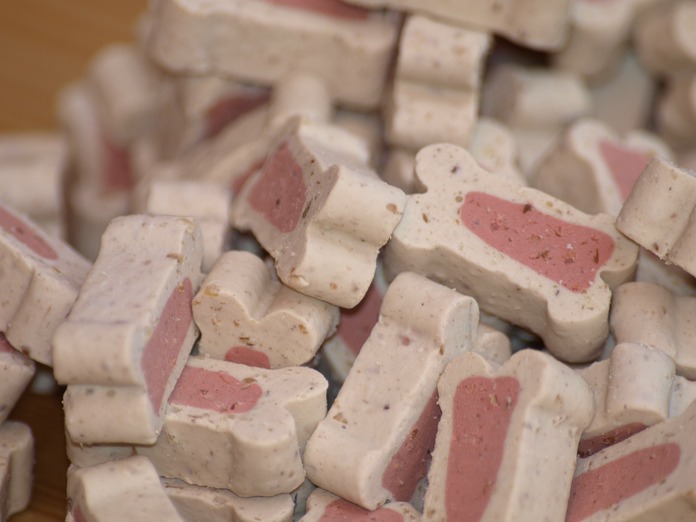
No matter how much thought you put into choosing a healthy dog food, it would all be put to waste if you are giving your pet a lot of treats.
Treats to dogs are like desserts to us. Sure, they are nice to have a taste from them from time to time. However, too much of it can lead to a wide array of health problems, including obesity. The treats should not go beyond 10% of your dog’s daily calorie consumption.
Aside from monitoring the number of treats that you give to your dog, you also need to pay attention to the quality of dog treats that you buy. One type of treats that you should avoid is body part treats as it contains different animal body parts that are prone to bacterial contamination. Some of these dog treats have also been associated with the development of various illnesses.
Change the Food of Your Dog From Time to Time
When you finally found the best food for your dog, it is indeed tempting to stick to it. After all, why should you bother yourself with looking for another type of food, right?
For your information, the physiology of dogs is designed to thrive with the help of different minerals, vitamins, and nutrients. Sadly, they won’t be able to get all of those dietary requirements from only one type of food.
With that in mind, it is recommended that you change your pet’s food at least every three months.
Human Foods That are Safe for Dogs
Aside from dog food, you can also feed human food to your pet. But please keep in mind that not all human food is safe for dogs. To help you out, here are some of the best human food that you can incorporate in your dog’s diet:
Carrots

Carrots contain low calories and high amounts of fiber and vitamin A which is beneficial for dogs.
Peanut Butter
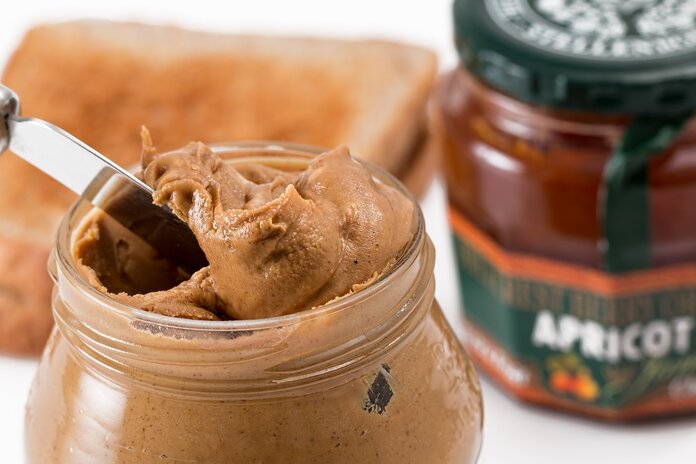
Dogs love this stuff and for a good reason! Aside from the fact that it tastes great, it is also a good source of protein along with vitamin B, vitamin E, niacin, and other heart-healthy fats.
However, you need to be careful in choosing the peanut butter product that you will feed him. You should use raw and unsalted peanut butter. You also need to make sure that the peanut butter product you will buy does not contain xylitol, as they are incredibly toxic to dogs.
Eggs
If you love eggs, then you will be happy to know that you can share your favorite food with your pet. Luckily, it is a great source of protein, riboflavin, and selenium for dogs.
Green Beans
Since it is rich in fiber, this vegetable is extremely filling for dogs. The best thing is that it contains low levels of calories. When preparing beans for your pet, don’t add salt.
Cooked Chicken and Turkey
Feeding your pet chicken and turkey is a great way to boost his protein consumption. You can easily incorporate cooked chicken in your dog’s regular food to enhance its flavor.
These human foods can be incorporated into your dog’s regular meal to boost their flavor and nutrient content.
If you feel that your dog is already getting bored with his usual diet, you can use it as an alternative food for them. You can feed your dog any of these foods, or you can use these as ingredients for a homemade dog food recipe.
Why Make Homemade Dog Food?
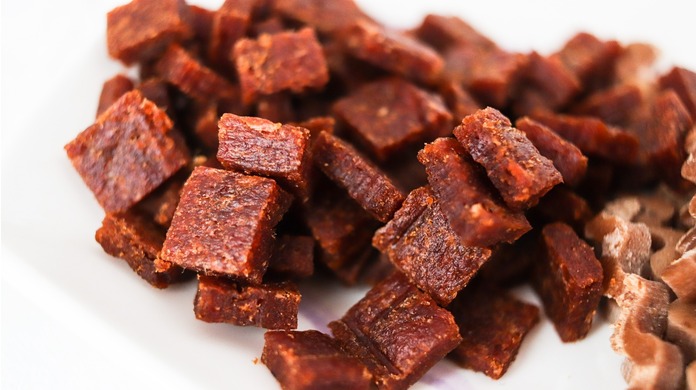
More homeowners are starting to switch to homemade dog food. Are you wondering if it is about time that you change your dog’s diet to homemade too? Are you intrigued as to what benefits your dog may get from a homemade diet?
Before we explore the benefits of homemade dog food, let us first understand what homemade dog food is. It is a type of dog food that is cooked at home using human foods. A lot of homeowners have decided to feed their pets homemade dog food due to a lot of reasons. Here they are:
– For protecting their pets from harmful ingredients that may be present in commercial dog foods
– To accommodate the specialized nutritional needs of dogs with medical conditions
– For ensuring the quality of ingredients of their dog’s food
– To protect their pets who have allergies to a lot of ingredients
– To fully know what goes into the food of their dogs
The dog food industry has encountered a lot of controversies for the past few years, which made a lot of pet parents concerned about the safety and health of their pets. This is the very reason why pet owners have decided to whip up homemade dog food recipes for their furry friends.
Understanding Your Homemade Dog Options
If you are intrigued as to how you can get your dog started on a homemade diet, the first thing that you need to understand is that there are three common ways on how to feed your dog a homemade diet. Here they are:
BARF Diet
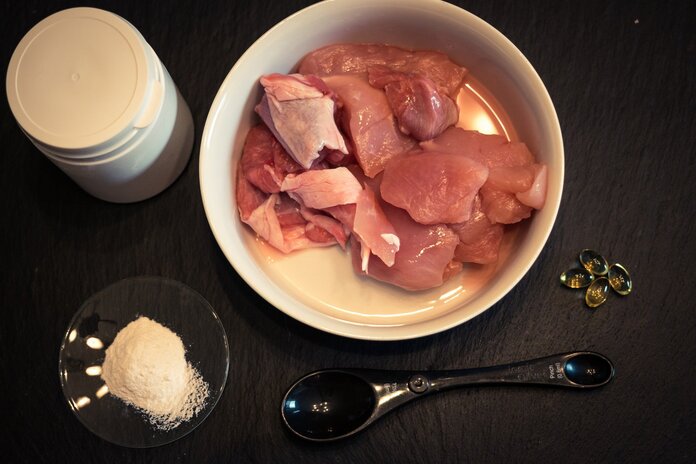
The BARF Diet is based on the principle that dogs are omnivores. With that in mind, this diet is made up of unprocessed foods that are considered to be biologically appropriate for dogs.
With that in mind, the diet involves the use of bones, animal organs, meat, supplements, vegetable, and fruits.
Prey Model Raw (PMR) Diet
On the other hand, this type of diet is designed to mimic the kind of food that dogs may have in the wild. In this diet, you will use up pure meat along with different parts of various animals, including feathers, organs, and bones.
DIY Homemade Dog Food
The only principle behind this diet is to prepare food with any ingredients that are perfectly safe for your dog and will provide him the nutrition he needs. With this diet, dog owners have the freedom to choose whatever he wants to feed their dog, as long as they are safe for consumption.
The diet does not exclude any particular food or food group. Besides, you can also incorporate both cooked and uncooked food into your dog’s diet.
However, you must keep in mind that it can be impossible for homemade dog food to provide all the vitamins and other nutrients that your dog. While human foods do contain these nutrients, their amounts might not be enough to cover your dog’s daily nutritional requirements.
To address that, you should give your dog some supplements. Consulting with his veterinarian can help you determine which type of supplement is most suitable for his needs.
3 Tips on How to Make Homemade Dog Food
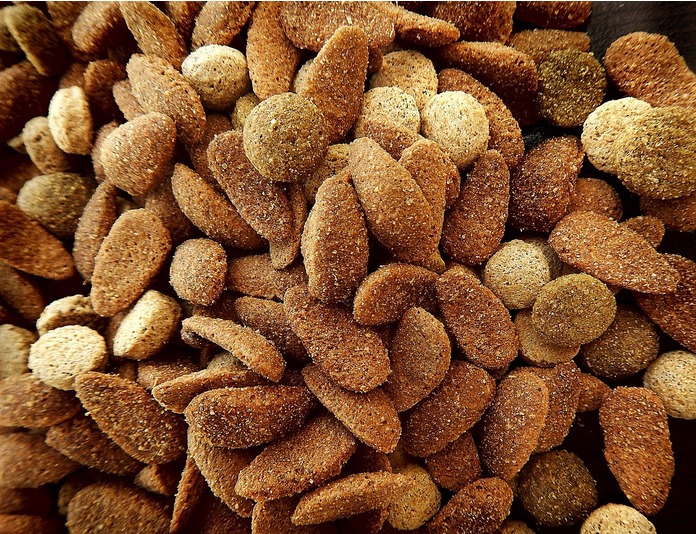
Regardless if you will feed your dog homemade dog food or commercial dog food, the goal is still the same—to provide him the nutrition he needs. Feeding him commercial food is easy because it is up to the manufacturers to create a nutritionally balanced dog food. When it comes to homemade dog food, the responsibility is yours.
With that in mind, here are essential tips you need to know in making a homemade healthy dog food:
Choose Your Meat Well
The base ingredient of most homemade dog food is no other than the meat. After all, dogs need as much as protein that they can get. Some of the best meat options that you can choose from include pork, beef, lamb, chicken, turkey, ostrich, venison, and buffalo. You can also use fish from time to time.
When choosing meat, make sure that it is fresh and fit for consumption. You also want meat with a fat content that is not greater than 20%.
Cook the Vegetables
You should allocate ¼ portion of the meal to vegetables as these are the ingredients that will provide vitamins, minerals, and nutrients to your dog. To make the most out of the nutrients of vegetables, you should cook them lightly by steaming them.
Some of the vegetables that you can choose from are carrots, zucchini, peas, pumpkin, squash, green beans, sweet potatoes, cauliflower, and yams. But of course, there are some vegetables that you should avoid. These include onions, bell pepper, spinach, onion, potato, tomato, leeks, and garlic.
Avoid Certain Carbohydrates Sources
You will be tempted to add rice to your dog food, but this carbohydrate source offers no nutritional value and will only add to the weight of your dog.
Furthermore, you should understand that dogs do not have digestive enzymes needed to digest and metabolize carbohydrates. With that in mind, other carbohydrate sources to avoid are wheat, corn, potato, and brown rice.
A Simple Homemade Dog Food Recipe to Get You Started
To jumpstart your homemade journey, we will share with you an easy peasy recipe that all dogs will truly love—a meatloaf! This recipe contains the right amount of proteins that the dog needs for muscle recovery and repair as well as body development.
We also have included liver in this recipe as it is an excellent source of vitamin A, B, and iron. However, please keep in mind that you should limit the liver consumption of your dog so you can prevent the risk of getting too much vitamin A. The healthy limit would be 5% of the total diet of your dog.
Aside from the meat, we also incorporated a few vegetable pieces in the recipe to deliver a well-rounded diet for your furry friend! Without further ado, here’s the recipe!
Ingredients
2 pounds ground chicken
¼ pound chicken or beef liver (rinsed well and diced)
1 cups of carrots (finely diced)
2 eggs
1 cups of green beans (finely diced)1 cups of potatoes (finely diced)¼ cup of pumpkin (pureed)
Cooking Instructions
1. Steam All the Vegetables
This is done so you can easily incorporate them into the mix. No need to season them since too much salt is dangerous to your pet.
2. Preheat the Oven to 350 Degrees
Do this before you prepare the other ingredients, so the oven has enough time to heat up.
3. Combine All Ingredients in a Large Mixing Bowl
Place all ingredients in the mixing bowl. Mix everything well.
4. Grease Baking Pans
Grease the pans a bit to prevent the mixture from sticking to its sides.
5. Transfer the Mixture Into the Baking Pans
Divide the mixture evenly on the baking pans. Using a spatula, smoothen the top of the mixture.
6. Bake the Mixture for Half an Hour
Afterward, remove the pans from the oven and let it cool down for a while. If it is already cool enough, remove the loaf from the ban and drain off excess grease.
7. Serve it to Your Dog
You can mash or slice it up and serve your dog a few slices.
8. Store Excess Meatloaf
If there are any leftovers, you should allow them to cool off totally. Wrap the leftovers in an aluminum foil. Place it in a zip-top bag then place it in a freezer. A frozen meatloaf can last for up to 6 months.
If you want to serve it to your dog again, you can place it in the refrigerator overnight and allow it to thaw. You can reheat it again in an oven.
How Do You Feed Your Dog?
There you go—everything you need to know to find, choose, and make healthy dog food for your pet. We have provided you everything we know.
This time, we would like to hear from you! How do you feed your dog? And do you have other nutrition tips of your own that you can share with us? If so, please leave a comment below. We would love to hear your thoughts!
